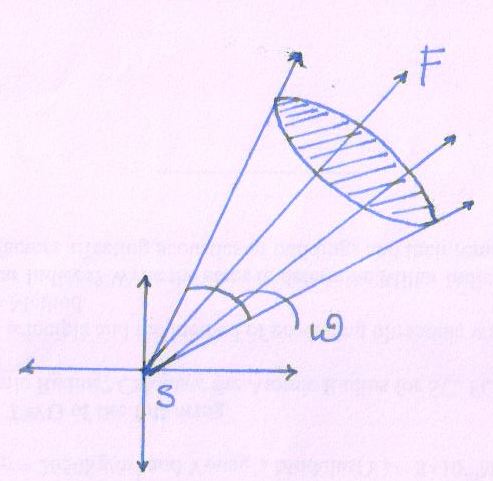Site pages
Current course
Participants
General
MODULE 1. Magnetism
MODULE 2. Particle Physics
MODULE 3. Modern Physics
MODULE 4. Semicoductor Physics
MODULE 5. Superconductivty
MODULE 6. Optics
LESSON 31. Basic concept of Photometry
Photometry
A light is a form of energy. So, it is measurable quantity. But the absolute measurement of light energy is not possible because, it is invariably accompanied by heat energy.
Photometry
-
Branch of optics
-
It deals with “measurement of light”, other word we can resolve Photo-Light and Metry-Measurement.
-
Deals with the luminous energy emitted by a source (energy emission capacity)
-
Visible point of view, It is comparison of relative brightness of two sources or two illuminated surfaces(light scattering capacity of surfaces)
We know that light makes object visible and light is a energy. Basically, by which objects are seen means we can say that the light either “reflected by the objects” or light is emitted by the objects”
Hence there are two types of objects
(i) Self –luminous objects; which give light of their own e.g sun, burning flame and lighted lamp
(ii) Non-luminous objects; which do not give the light of their own e.g tress, table, books, planets and moon
Fundamental concept
Luminous Flux
-
The amount of light (visible part of the spectrum) which flows from a source of flows from a illuminating surface per second.
-
It is part of the total visible radiation which can affect our eyes.
-
It is the rate of flow of the energy e.g. it is one king of power.
-
Denoted by F or Ø
-
Unit is Lumen
Justification of Lumen
It is luminous flux radiated by uniform sources of one candle power through unit solid angle. i.e point source of one candle power radiates luminous flux through unit solid angle.
The luminous flux which spread out from uniform point source of one candle power placed at the center of a sphere of one meter radius and falls on 1m2
Luminous Intensity (Illumination Power) (I)
Luminous flux is emitted by the source of candle power in all direction. The emitted of luminous flux in all direction per unit solid angle is called luminous intensity or illumination power.

Fig 21(1)
Let F or Ø is luminous flux is radiated by a source within a solid angle (ω) in any direction.
Hence, Luminous Intensity \[\left( I \right)\] = \[{{For\emptyset } \over \omega }\]
F or Ø in Lumen ω- in steradians
I = \[{{Lumen} \over {Steradians}}\] or candela
Candela; Source (light source) radiates \[{1 \over {60}}\] of luminous intensity per cm2
Illumination OR Intensity of Illumination of a surface
The illumination or intensity of illumination at a point on a surface is defined as the luminous flux received on the unit area of the surface surrounding the point.
Let F Luminous flux in lumen
A Area in met2
So, intensity of illumination = \[{F \over A}\] = \[{{lumen} \over {me{t^2}}}\]
Brightness OR Luminance of surface
Let light is incident on the surface some part of the light is reflected from surface and it is distributed over a wide range of directions. The brightness of the surface in a given direction is measured by the luminous flux per meter square which is coming from the surface in a particular direction.
It is denoted by B
It is different from illumination (E) which is luminous flux per meter square incident on the surface
Different surfaces have different brightness because it is reflecting capacity of the surface. Hence, different material has different reflecting coefficient.
Reflection Coefficient (r) = \[{B \over E}\] = = \[{AB \over F}\]
B Brightness (luminescence of surface)
E Illumination (intensity of illumination of surface)
Brightness of the surface may be due to transmission of the luminous flux (F) through it
So, Transmission Coefficient
F - Luminous flux per meter square transmitted through the substance
E - Luminous flux or illumination per meter square incident on the surface.